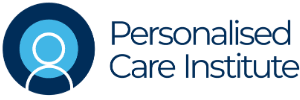This a guest blog from Neil Marshall, Head of Operations and Relationships at Connect Health, in which he shares his experience of embedding personalised care into his organisations practice.
Personalised care is about enabling people to have choice and control over the way that their care is planned and delivered based on what matters to them and their individual needs and preferences. This recognises that a one size fits all health and care system cannot meet the increasing complexity of people’s needs and expectations. (NHS England).
Connect Health supported early implementation of shared decision making (SDM) within its Nottingham service since 2017, where I worked as Service Manager and Advanced Practice Lead within our Community Musculoskeletal Assessment and Treatment Service. As an organisation, we have continued to commit to enhancing personalised care, embedding changes to our services to develop our approach. This blog will focus on sharing some of our learning to support other organisations to identify similar opportunities to enable personalised care.
There are several key enablers that have been identified to support embedding personalised care into practice. Throughout this short blog I will share experiences and lessons learned, with a focus on these six themes alongside the importance of using data to inform and drive change.
Leadership and Co-production
Working collaboratively with our system partners and patient participation groups in Greater Nottingham, we were able to successfully co-produce SDM aids that provide patients with consistent evidence-based information on accessible local pathways to support decisions on their treatment. Patient feedback following embedding these changes included:
“The Physiotherapist was punctual, well-mannered, and explained the options. They supported me to make decisions about my treatment”.
“I was given a lot of advice as to how to manage my knee problem, which allowed me to be in control of the situation, which suits me perfectly”.
Learning and Development
We have used several mechanisms to establish and address the learning and development needs of our workforce to facilitate change in personalised care within clinical practice . For example, following a pilot of embedding personalised care e-learning training within our Darlington MSK service, we identified an 11% improvement in the proportion of patients who would recommend our service to friends and family (more about this here). We then partnered with the Personalised Care Institute to roll out quality assured training to our entire workforce including administrative, operational, and executive roles
Additional SDM training has been embedded within our clinical training programs, this includes our Graduate Development Program and within our wider Clinical Academy offer that supports our clinical workforce development to ensure we continue to place the patient at the heart of what we do. We now also have three PCI ambassadors driving the personalised care improvement agenda within the organisation
Clinical Supervision
By including personalised care and shared decision making as a theme within our clinical supervision model, we have encouraged conversations, supported learning and focussed on changing behaviours within clinical practice. It is important to recognise this is a notable change for both patients and clinicians in how we deliver healthcare.
Audit is a mechanism we have utilised to review data, compare against standards and benchmark to identify opportunities for ongoing improvement. This continuous cycle of improvement has supported our implementation and is a great tool to evidence change, outcomes and further opportunities for improvement.
Prepared Patients
To support our patients’ preparation for an effective consultation, we updated our website and patient pre-assessment information. A number of solutions have been identified such as including sharing templates such as ‘Ask 3 Questions’ , ‘what matters to you?’ or ‘It’s OK to Ask.’
We also updated our templates letters to our patients, de-medicalising language and utilising technology to enable us to describe issues in the patient’s own words. We utilised statements such as: “You told me before the appointment”, “You told me today”, “We found”, “We discussed and agreed”, to ensure we are personalising our communications to our patients in language they understand. We have also implemented audits related to assessing reading age required to interact meaningfully with our written correspondence, seeking to ensure it is accessible to all.
Supportive Systems and Processes/ Digital Solutions
Clinician time is often identified as a crucial factor in enabling the delivery of personalised care. In order to facilitate this we have innovated a number of processes to support clinicians to access information, share information more easily and communicate more effectively these include:
- Shared Records – as healthcare can often cross multiple services we recognise the need to access patient information to support our clinicians to be able to safely assess, diagnose and discuss treatment options. Shared records across primary, community and secondary care enable clinicians to better understand the patient journey, reduce repetition of assessment and safely focus on the individual needs of the patient
- Digitally Enabled Consultations is a project that has enabled us to ask questions to our patients prior to their appointment. This helps us to establish what matters most to them, previous treatment, investigations to date and establish concerns or questions that they wish to be answered within their assessment
- Automation of collection of Patient Reported Experience Measures and Patient Reported Outcome Measures. This innovation enables our patients to access a digital portal to independently complete these questionnaires, with patient responses then feeding into our clinical templates
This information helps clinicians to shape assessments to meet individual needs, confirm information rather than repeat questions, reducing workload on clinicians to focus on personalised care and improve the patient experience.
We recognise this is a continuous journey but I hope that you have found my reflections helpful. Through sharing some of our learning I hope to have equipped you with some knowledge, skills and confidence to embark upon similar programs of change as we all look to successfully embed personalised care.
